- Do you subscribe to Dharma Dog Training’s Newsletter? You should.
- A Unique Campaign from The Humane Society of the United States
- Rabid bats in Omaha- Stay safe, prepared with these tips
- Springtime Activities in Omaha
- Mill Dog Monthly from Bailing Out Benji
- World Spay Day, Legislative Alert in Nebraska
- Attend the Nebraska Rescue Council’s monthly meeting this Saturday
- Five Hard-to-Ignore Reasons to Adopt!
- Paws in Pink to Benefit Breast Cancer Foundation
- VCA, Inc. Acquires MidWest Vet Specialists from Kansas State University
Dharma Dog Top 10 Training Tips
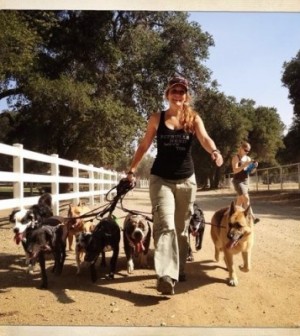
Kelley McAtee of Dharma Dog Training is often asked about the most important things to consider when training dogs to behave. There isn’t just one thing to remember- in fact, to achieve an emotionally stable, behaved, trainable dog, one must consider a list of things.
Here are Dharma Dog Training’s Top 10 Tips to help you get started in helping your dog achieve an emotionally balanced state of mind. Keep in mind, when it comes to training your dog, being proactive and preventing a problem from starting is a lot easier than training a dog to unlearn an unwanted behavior!
1. Create rules, boundaries & limits
If your dog doesn’t understand what the rules and boundaries are in your house, how are they supposed to live peacefully with you? First everyone in the house must decide what rules will be healthiest and safest for everyone living with your dog. Then start by teaching your dog clear rules and boundaries with a slip lead, guiding them into areas you want to allow them in, or to guide them off furniture if that is a rule for you. Use a crate when you can’t be there to implement your rules and boundaries. But most importantly you must figure out how to communicate these rules, clearly and humanely in meaningful ways your dog understands, otherwise the rules are no good. If you need help figuring out how to communicate effectively with your four-legged friend, we can help.
2. Kennel Training
Dogs are DEN CREATURES by nature, and they need a safe secure place to go to. Kennel training allows your dog to practice a calm state of mind and is a LIFE SKILL they can keep throughout their whole life. I have seen kennels have dramatic effects on a dog’s life, helping them to remain sane, safe and in their home. Kennels are helpful for newly adopted dogs or dogs just entering a home environment, limiting the amount of responsibility left on a dog in a NEW SPACE. It is helpful in an emergency situation or a veterinarian visit and will keep dogs from FIGHTING, seriously INJURING or KILLING each other when you are not home. Start by picking the right size kennel. Your dog should be able to get up turn around comfortably and not hit their head on the top of the kennel. I like the black wire kennels for indoor stationary kennels, or plastic kennels for traveling. Pick a calm, quiet spot for the kennel, only put in blankets or beds if the dog is not going to chew them. Same goes for putting a blanket over part of the kennel as more of a “den-like” space. Many dogs panic when being left in a kennel and if this is the case you need to start with a slip lead on the dog 1) Leading the dog in and out of the kennel 2) Once they do this without stress incorporate a SIT in the kennel 3) Once they complete this exercise without stress incorporate a DOWN in the kennel 4) You can begin by closing and opening the door for short periods if they can still hold a down. Using treats for COUNTER CONDITIONING can be helpful if your dog will take them and mastering SITS, DOWNS and PLACE is essential to great kennel training, because if your dog can hold place on a bed (that serves as a MENTAL KENNEL) outside of the crate, then they will have a greater chance of succeeding INSIDE the crate. *Kennel training can be very STRESSFUL so if your dog is trying to injure themselves by breaking out of the crate, or becomes very stressed in the crate, we recommend contacting us for assistance.
3. Structured Walk
Learn how to take your dog on a structured daily walk. Walks are one of the most important things you can do for your dog; ultimately this is the one area you want to MASTER with your dog! There is so much information that is relayed on this walk; it’s a FOUNDATION for your life with your dog. If there are cracks in your walk, likely there are cracks in the foundation of your relationship with your dog! Your walk starts when you pick up the leash, put on your dog, and then exit the door. THRESHOLDS are another important part of the walk, and if your dog isn’t waiting for you at the door and showing some respect, then there are some issues. I work with my clients to earn RESPECT at both ends of the leash and pushing out a doorway can lead to serious injuries and even DEATH for a dog, so we do take this very serious and STOP dogs from pushing through doors. We also TEACH our clients how to ADVOCATE for their dogs on their walks, we recommend that our clients NOT ALLOW STRANGERS TO PET their dogs, this tells your dog that you are NOT setting rules and boundaries for strangers and can make them feel very UNSAFE! We recommend our clients walk with Spray Shield (citronella spray) to prevent any attacks or fights with loose/stray dogs on your walks. We have seen way too many dogs that have been attacked on a walk, and then owners have to spend too much time repairing the relationship and earning their dogs trust again, which was broken when another dog was allowed to invade their space. The structured walk in conjunction with LONG LINE work allowing more freedom and choices for you and your dog to explore the world, is all part of our training plans and is one of the ways we repair the relationship between the dog and their owner.
4. Place Command
Place command is something we teach all dogs that go through our training plans, and is often referred to as “doggie meditation.” It is like having an OFF switch for your dog. Teaching your dog ON LEASH where their “place” bed is, they are asked to remain there until released. It is a SAFE place for your dog to LEARN about the world and process their EMOTIONS and FEELINGS about how they feel about the world but NOT acting on those feelings. So many dogs are ACTING out because they are unable to deal with STRESS in their lives and our training plans TEACH them “how to deal with stress” in HEALTHY and SOCIALLY APPROPRIATE ways. Until a dog successfully has a SOLID place command, we teach an exercise called “SITTING ON YOUR DOG,” which is simply using a slip lead that is attached to your dog, placing your foot on that leash giving them just enough leash to be uncomfortable and WAITING for your dog to RELAX and get CALM, once they do sometimes we add MASSAGE (Conditioned Relaxation) so your dog can learn how to get calm in a DOWN position faster than they would normally. So many dogs do not know how to RELAX, so we must show them…this is your OFF switch.
5. Commands
Try to avoid giving your dog commands you can’t ENFORCE. Every time you give a command that is not complied with and enforced, your dog learns that commands are OPTIONAL. One command should equal one response, so you give your dog only one command (twice max), then gently enforce it (we use slip leads or training collars and leashes in our training programs). Repeating commands tunes your dog out (as does nagging) and teaches your dog that the first few times are a bluff. REPEATING commands is neither efficient nor effective way to issue commands. Simply give your dog a single “SIT” and the gently place or lure your dog into the sit position (praise if in teaching phase). This can be applied to any wanted behavior. Avoid ‘stacking’ commands and saying “sit, down” to your dog. It is confusing and can lead to frustration for you and your dog! Avoid using a harsh voice; your tone should sound POSITIVE, CALM and ASSERTIVE rather than harsh or loud. If your dog isn’t responding to you, you need to determine if your dog a) knows what you want b) knows how to do the command c) is not responding due to fear, stress or confusion d) or is refusing to comply. Once you understand this then you can effectively determine how to communicate with your dog. Do they need more time to acclimate or more time spent on teaching the behavior? Determining how to HUMANELY hold your dog accountable once they understand the command is what most of our clients struggle with, and we can help!
6. Timing
Whether you are rewarding or trying to correct a behavior, GOOD TIMING IS ESSENTIAL! The best time to reward a dog is the moment or within a few seconds of the wanted behavior. Just like with children, the easiest and most effective time to correct your dog is before they are about to make a bad decision, when they are ‘THINKING’ about making that decision. And you can interrupt this thought process with a verbal cue, leash information, spatial pressure or a clear “no.” Often dog owners inadvertently reinforce their dog’s negative behavior, by giving their dog lots of attention (even if it’s negative) when they misbehave, which only reinforces that behavior and will likely be repeated. Correct or better yet, prevent the misbehavior, DON’T punish your dog. Teaching and communicating is where it’s at in building the relationship you want with your dog. I am interested in CLEAR communication, giving your dog appropriate feedback at the right time makes a huge difference in their peace of mind and understanding of the world around them. Misbehaviors usually stem from a world of missed opportunities to give your dog information about what is expected of them and social acceptable in our world.
7. Training at home
Just like with children, how well your dog responds to you at home will determine how well they respond outdoors around distractions. If we can’t get your dog’s behavior under control INDOORS, we certainly won’t be able to get it under control OUTDOORS where there are many more distractions. Which is why we ALWAYS start with building a FOUNDATION indoors without distractions, teaching our clients how to get HEALTHY COMPLIANCE from their dogs through BASIC COMMANDS. There is a difference between FORCING and INSISTING your dog do something. Any jumping on you or guests, charging, begging, biting, barking, demanding attention, should be address so that you may have a calm home environment but also this will set your dog up for success in the REAL WORLD! We begin by working on basic commands in your home starting with no/low distractions, and then work your way up to real life scenarios with guests and family, before you venture out into the world and continue with training there!
8. Respect on both ends of the leash
This goes without saying, but never train your dog when you’re feeling ANGRY or IMPATIENT. Earning your dog’s RESPECT is never accomplished by yelling, hitting or handling your dog in a harsh manner. There are many more HUMANE ways to teach your dog to follow your LEAD and to respect your leadership. Again creating CLEAR communication is the best way to train your dog. After your dog has made a mistake, DISCIPLINE does not work, and if you take a head on, “battle” approach with your dog, your missing out on huge relationship building and TEACHING opportunities for your dog to make BETTER decisions next time around! It is easy to become frustrated during the training process but anger creates an imbalance in your relationship and we are looking to create a BALANCED, RESPECTFUL and PEACEFUL relationship between you and your dog. So take a break and return to training at a later time if this is the case and chances are you both will have learned something since the last time and things will happen much easier for both of you when things are forced!
9. Play Groups
At Dharma Dog Training we recommend smaller play groups with dogs and owners that you know for your dog to play and socialize with…remember they LEARN from each other! In my opinion, there is far too much BULLYING that goes on in most dog parks and other large unregulated, social groups. I have witnessed on countless occasions dogs running from other dogs, cowering and hiding behind their owners or other people, only to be turned a blind eye to. People assume that “dogs will work it out,” but that is far from the case. I do not believe bullying should be allowed on playgrounds of two legged, nor should we allow it in our four legged parks. I understand the usefulness of dog parks and have used them before but I stress you should be willing to be able to ADVOCATE for your dog or others if you ever see bullying going on there. I have worked with many dogs that had similar bullying or bad experiences and become aggressive/defensive after a bad encounter with another dog at a park or another social setting. Again why I prefer structured play groups, I have also found that structured pack walks, long line work, off leash hikes, fetching the ball, treadmill time, and training on place command work great for excess energy!
10. Celebrate Your Dog
It is easy to become frustrated and focused on all the things your dog is or has done wrong when you are beginning training. It will help to remember WHY you decided to get a dog in the first place and all the things they ADD to your life. While focusing on the things they do RIGHT and all the things your dogs can TEACH you about YOURSELF if you are open to the lessons! Our dogs can actually become teachers in patience, trust, openness, leadership, assertiveness and confidence building for you, along with so many other things. My dogs have been my best teachers in life, but I had to be willing to learn, open to the lessons and have the determination NOT to give up when the going got TOUGH! And believe me, there were times that got really ROUGH, but during the process of working my dogs through their issues to help them become better dogs, I too have become a better person because of it. And I promise you, once you commit to the PROCESS, things will start to change and you and your dogs will find the PEACE you have been searching for!
For more from Dharma Dog Training, please visit www.dharmadogtraining.com. And thanks to Kelley for her continued support, including this month’s Training content!
Related Posts
Latest News
-
3 Tips for Pet Owners on Training Rescue Dogs
Owning a rescue dog can take some work compared to...
- Posted 3 weeks ago
- 0
-
10 Tips To Remember When Bringing Your Rescue Dog Home
Bringing your new rescue dog home for the first time...
- Posted 3 weeks ago
- 0
-
Choosing the Right Pet for Your Lifestyle
Are you thinking about getting a pet but unsure what...
- Posted 1 month ago
- 0
-
How to Make Your Rescue Pet as Comfortable as Possible
Did you bring home a new pet from a shelter...
- Posted 2 months ago
- 0
-
How Having A Pet Can Change Your Life
Having a pet can open your heart in ways that...
- Posted 7 months ago
- 0
-
How To Improve The Life Of Your Senior Pet
Do you have an elderly fur baby and want to...
- Posted 8 months ago
- 0
-
Springtime Activities To Enjoy With Your Furry Friends
Are you preparing for warmer weather and want some ideas...
- Posted 9 months ago
- 0




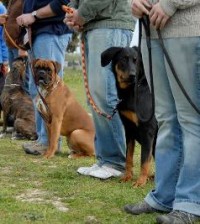



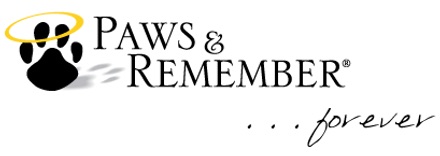






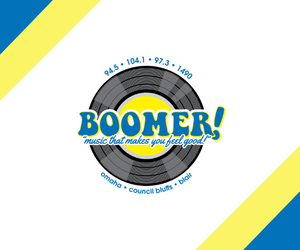




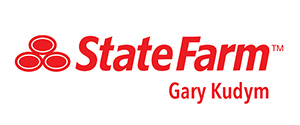
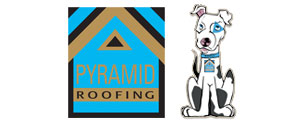

You must be logged in to post a comment Login